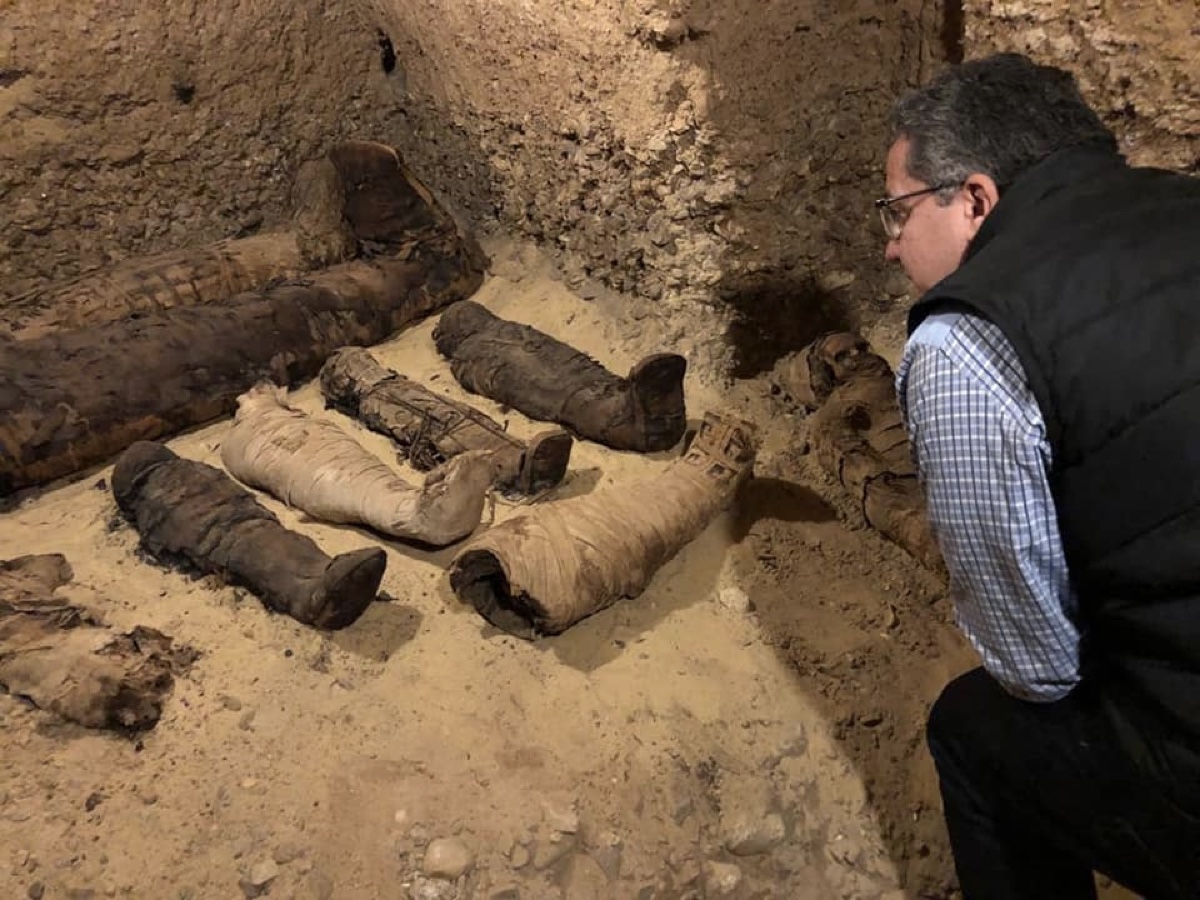Maze of Tombs in Egypt Holds Many Mummies Dating Back 2,300 Years
The mummies, which likely belonged to a family from the elite middle class, were discovered at the Egyptian archaeological site called Tuna el-Gebel, which lies to the west of the Nile River, the Egyptian antiquities ministry announced. The burials date back to a line of rulers descended from Ptolemy Soter, who was one of Alexander the Great's generals. (Cleopatra VII was the last of the Ptolemaic rulers; in 30 B.C., after her forces were defeated by Roman emperor Augustus, she killed herself.)
All of the mummies appear to be in good condition, according to Minister of Antiquities Khaled El-Enany. The archaeologists found mummies of children wrapped in linen, some of which were decorated with an ancient Egyptian script called Demotic writing. Some of the mummies of the men and women in the chambers still had fragments of the colorful cartonnage (a material made of linen or papyri and covered in plaster) covering their feet. [See Photos of Mummies Discovered at Another Ancient Egyptian Cemetery]
Potsherds called straca and papyri fragments unearthed in the grave helped the archaeologists date the burials back to the Ptolemaic.
The mummies were buried in various types of tombs, according to Mostafa Waziri, secretary general of the Supreme Council of Antiquities. Some mummies were buried inside stone or wooden sarcophagi; others were lying on the tomb floors or inside niches there.

The discovery was made during a joint excavation by the Ministry of Antiquities and the Research Center for Archaeological Studies of Minya University in Egypt. The joint mission began their investigation of Tuna el-Gebel last February, when the archaeologists discovered a tomb engraved into the rock. That burial included a hallway that led to a sloping staircase that opened into a rectangular chamber with several burials inside, according to the statement by the ministries.
Archaeologists have been exploring Tuna el-Gebel cemeteries for about 80 years. For instance, in 1934, archaeologists announced they had discovered fragments painted with mythical scenes at a house at the site, showing episodes of Agamemnon and Oedipus legends, according to a New York Times article. In 2017, they discovered a cemetery at el-Gebel with underground catacombs. And just last February, the discovery of a cemetery with mummified high priests was announced.
- Family Ties: 8 Truly Dysfunctional Royal Families
- The 25 Most Mysterious Archaeological Finds on Earth
- 10 Biggest Historical Mysteries That Will Probably Never Be Solved
Originally published on Live Science.
Sign up for the Live Science daily newsletter now
Get the world’s most fascinating discoveries delivered straight to your inbox.
Jeanna Bryner is managing editor of Scientific American. Previously she was editor in chief of Live Science and, prior to that, an editor at Scholastic's Science World magazine. Bryner has an English degree from Salisbury University, a master's degree in biogeochemistry and environmental sciences from the University of Maryland and a graduate science journalism degree from New York University. She has worked as a biologist in Florida, where she monitored wetlands and did field surveys for endangered species, including the gorgeous Florida Scrub Jay. She also received an ocean sciences journalism fellowship from the Woods Hole Oceanographic Institution. She is a firm believer that science is for everyone and that just about everything can be viewed through the lens of science.









